Houston House
Introduction
Text-to-speech Audio
The Railroad Hotel and Eating House, colloquially known as the Houston House, along with the Annex building are both located at the corner of First and Water Streets overlooking the railroad tracks to the south of the town of Newburg, Missouri. Both buildings are of the late 19th-and-early-20th-century Princess Ann style of architecture. The Annex was the first of the two buildings constructed by hotel proprietor William H. Harris of Dixon, Missouri, in 1883, and it served as the Harris family home until the early 1900s when rooms in the Annex were increasingly utilized for hotel guests and railroad workers. Construction on the hotel began in mid-1883 with the hotel opening for business on January 1, 1884. Even though the town was officially recognized as such in 1888, the citizenry of Newburg maintain that its founding coincides with the opening of the hotel and the FRISCO roundhouse in January 1884.
The hotel has strong ties to the St. Louis-San Francisco Railroad (FRISCO) which ferried supplies, passengers, and railroad employees between St. Louis and Springfield, Missouri, from 1884 to the mid-1960s (today the rail lines are still used to carry supplies and various goods). Both buildings have been in nearly continuous use since their construction in 1884, with the hotel portion ceasing operations in the late 1950s and the restaurant portion closing in 1982. Today, the hotel is owned and operated by the Newburg Community Revitalization Program Group which runs a Soup Kitchen once a week for the local community to raise funds to help with building/property maintenance and upkeep. The Annex houses the Newburg Children's Museum founded and curated by Dr. Elizabeth Frances Rose te Groen.
Images
Railroad Hotel and Eating House, “Annex.” Photo is of the front façade which is overlooking the courtyard and the railroad tracks on the other side of First Street. Camera is facing north, up Water Street.

Photo is of the front, left side façade of the Annex which is overlooking the courtyard and railroad tracks on the other side of First Street. Camera is facing north, up Water Street.
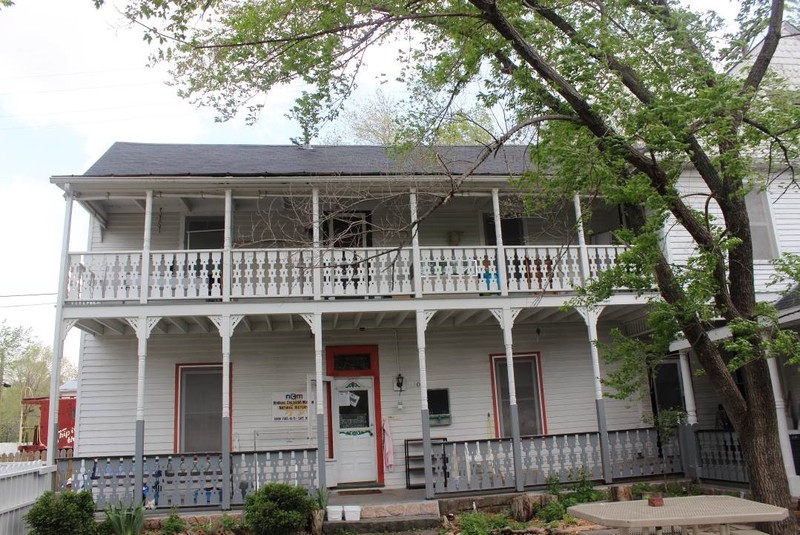
Photo is of the front, right façade of the Annex’s first floor. Façade is overlooking the walkway between the rear of the Railroad Hotel and Eating House and Water Street. Camera is facing east parallel to Frist Street.
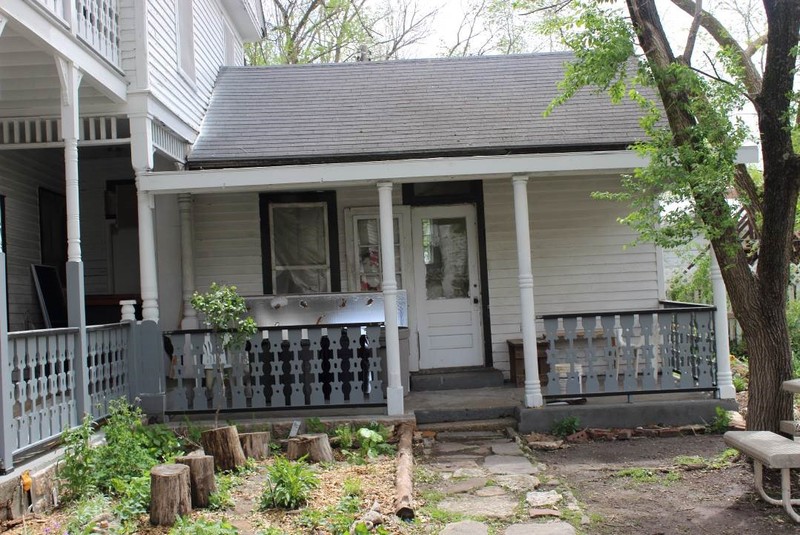
Photo is of the west facing façade of the Annex. Façade is overlooking Water Street. Camera is facing east, parallel to Frist Street.
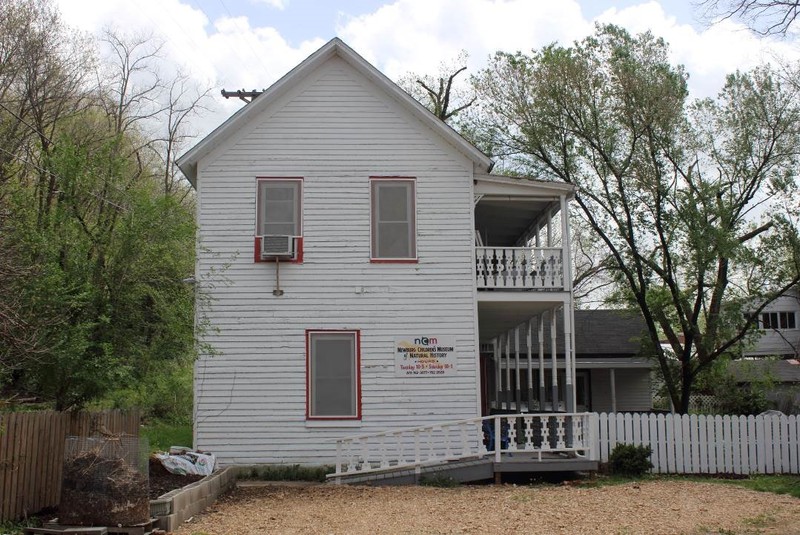
Photo is of the rear façade of the Annex. This façade is overlooking the Frisco Railroad Caboose and Museum. Water Street is to the right of the rear facade. Camera is facing south.
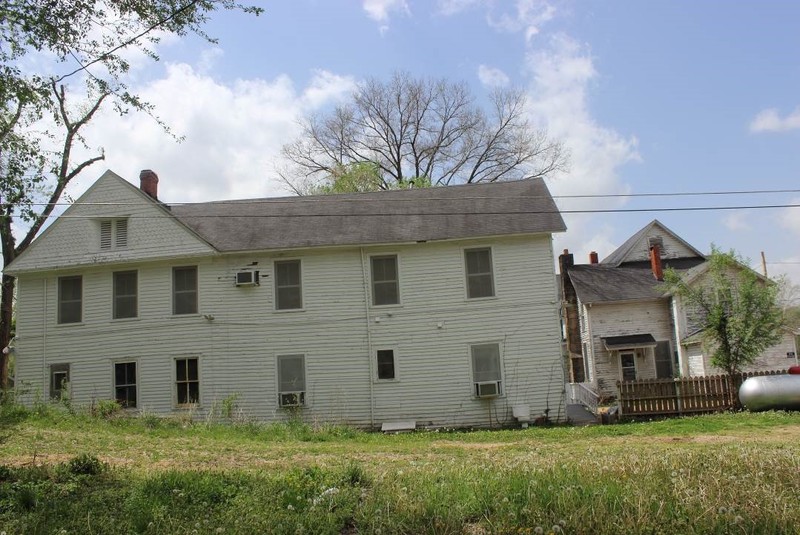
Photo is of the right façade of the Annex. This façade is overlooking the old Drug Store and the old East 2nd Street road. Camera is facing southwest toward Water Street.
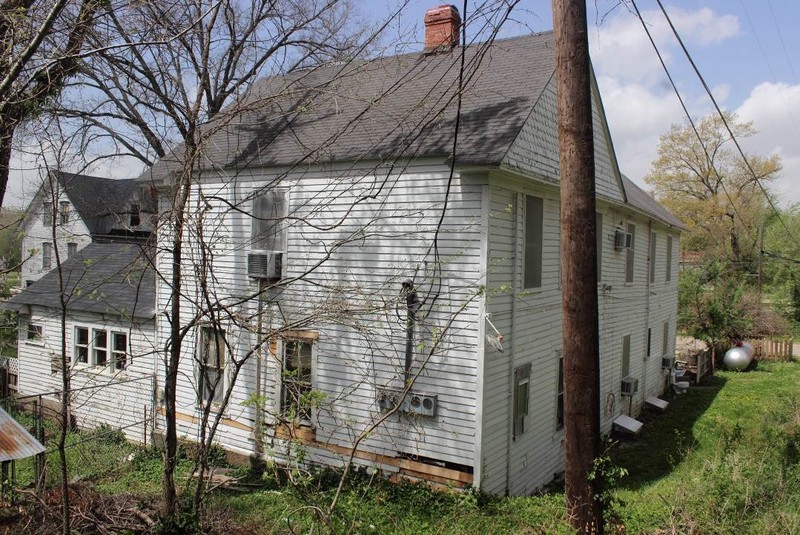
Photo is of the Cave Rock Fountain located in the Railroad Hotel and Eating House's courtyard. Camera is facing northwest.
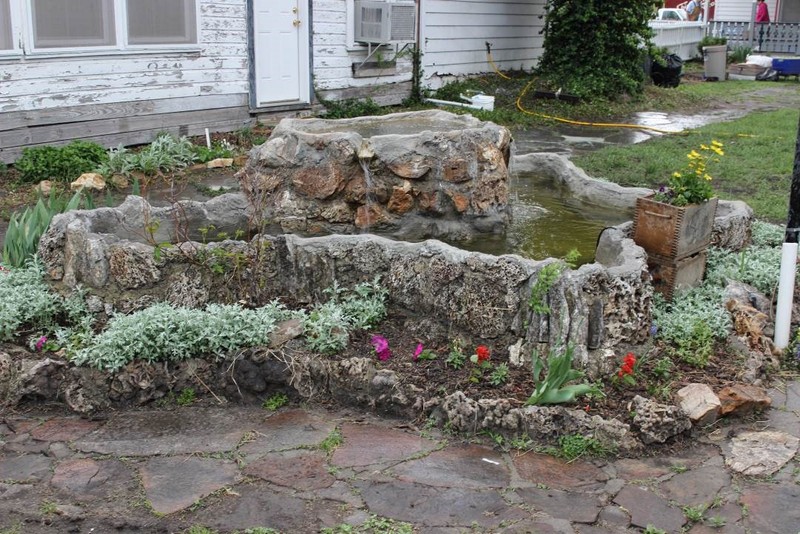
Photo is another view of the Cave Rock Fountain taken from the back. Camera is facing southeast.

Photo is of the front façade of the Railroad Hotel and Eating House overlooking Frist Street and the railroad tracks. Camera is facing north.
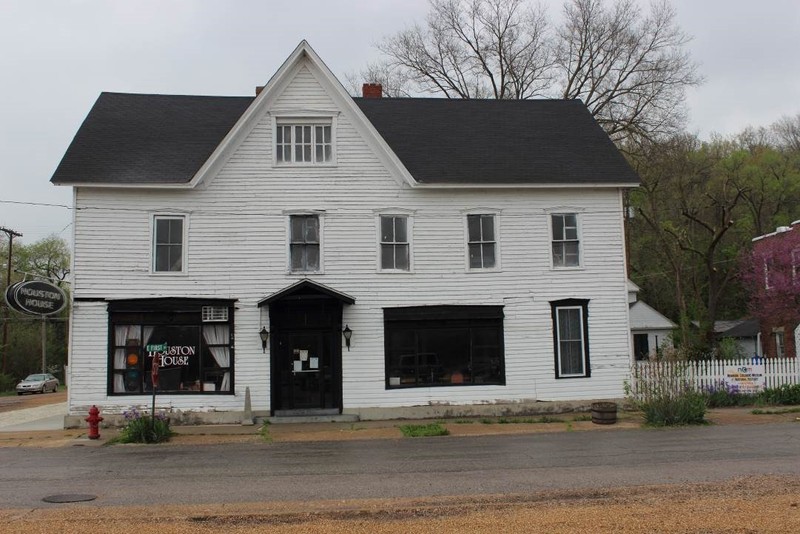
Photo is of the neon sign that depicts the name most locally associated with the building. The sign hangs on the left hand side of the front façade of the Railroad Hotel and Eating House at the corner of First and Water Street. Camera is facing northwest overlooking Water Street.
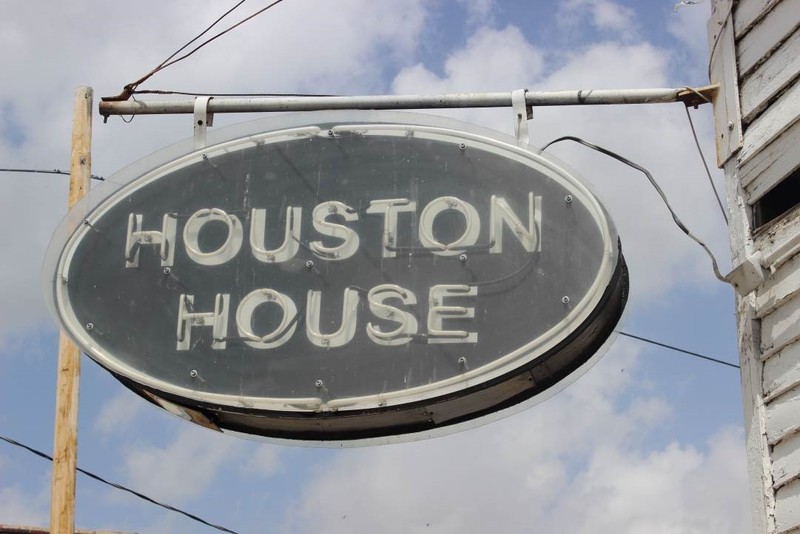
Photo is of the right façade overlooking the courtyard parallel to Frist Street. Camera is facing west.
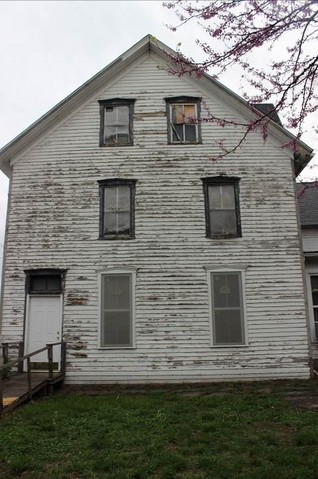
Photo is of the east facing facade overlooking the courtyard and the Cave Rock Fountain, as well as the old Drug Store located several yards to the right of building. Camera is facing southwest.
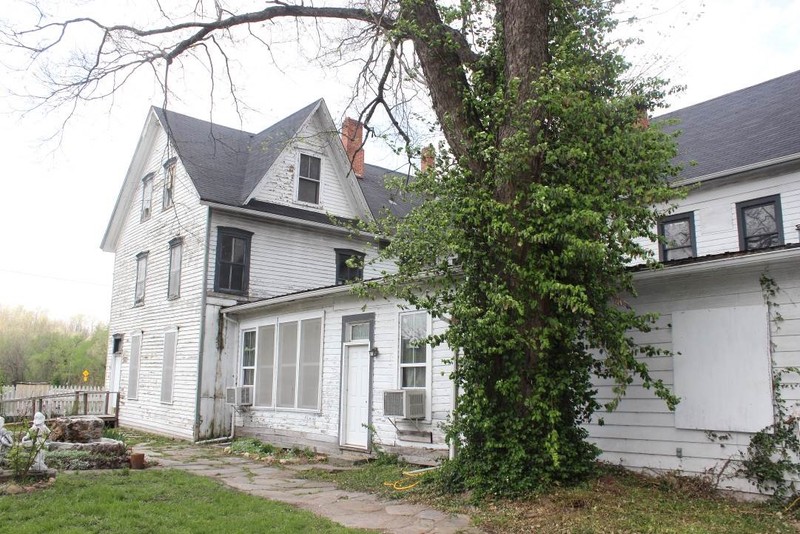
Photo is of the east facing façade overlooking the courtyard and the Cave Rock Fountain, as well as the Old Drug Store located several yards to the right of the building. Camera is facing northwest.
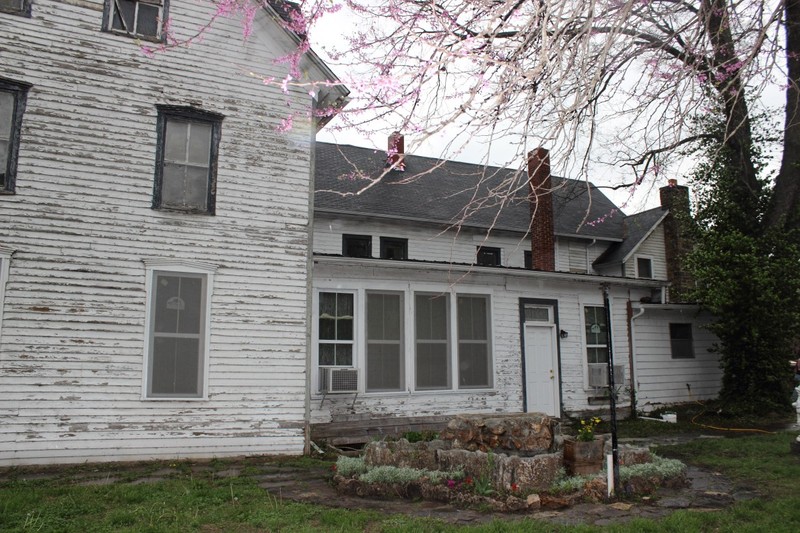
Photo is of the rear east facing façade that overlooks the courtyard and the Annex. Camera is facing west toward Water Street.
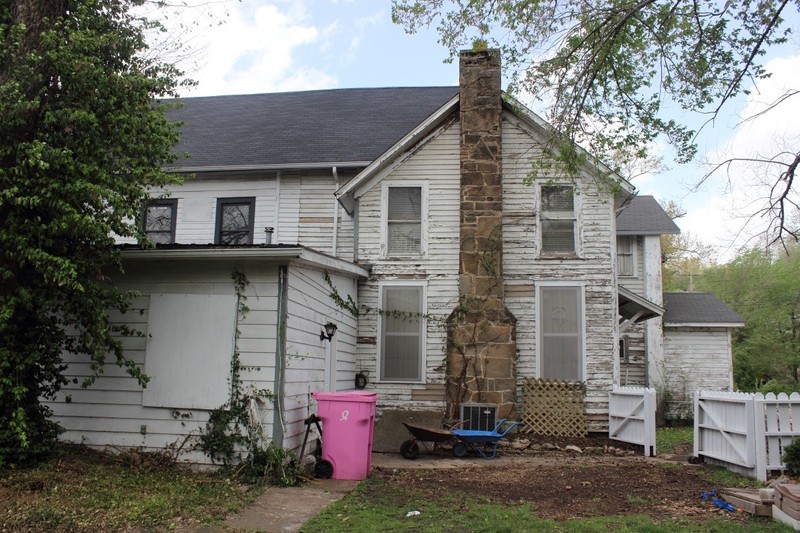
Photo is of the rear of the Railroad Hotel and Eating House overlooking the walkway between it and the Annex. The rear façade is also overlooking the Frisco Railroad Caboose and Museum. The rear is parallel to Water Street. Camera is facing south.
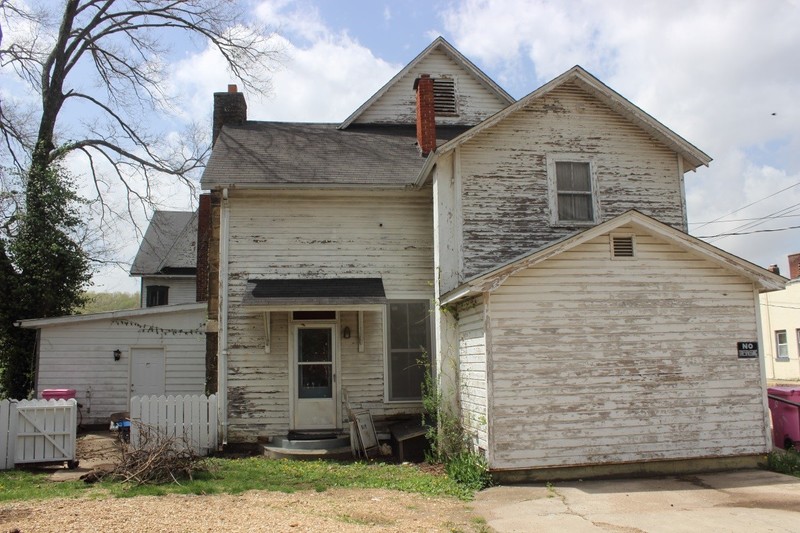
Photo is of the rear and western façade of the Railroad Hotel and Eating House overlooking Water Street. Camera is pointed down Water Street toward First Street in a southern projection.
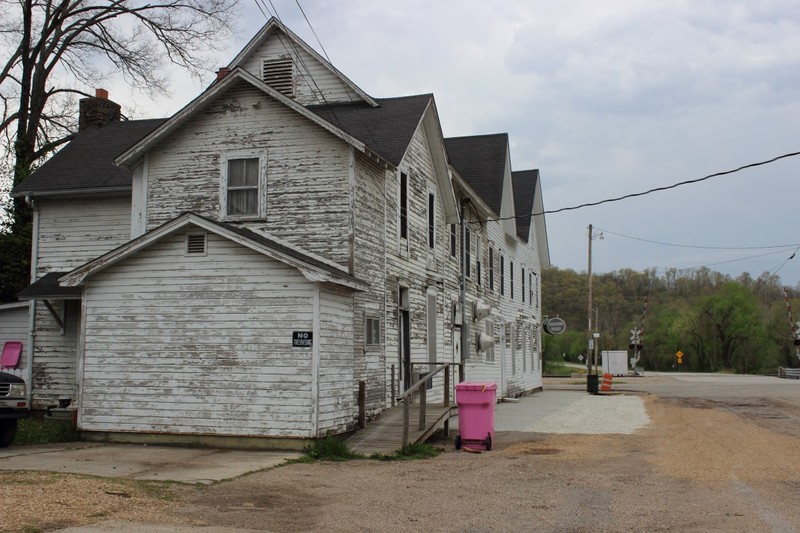
Photo is of the western façade of the Railroad Hotel and Eating House overlooking Water Street. Camera is facing southeast.
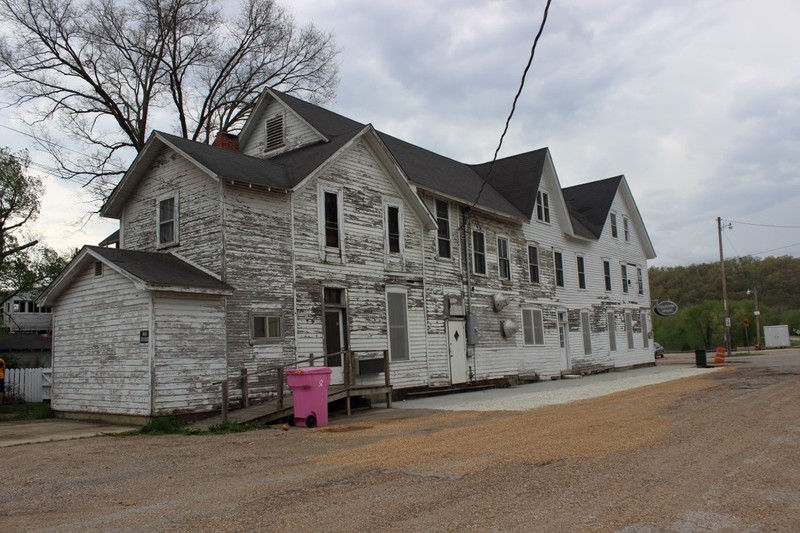
Photo is of the rear of and side view of the Railroad Eating House with the western façade of the Annex, depicting the walkway between the two buildings overlooking Water Street. Camera is facing east.
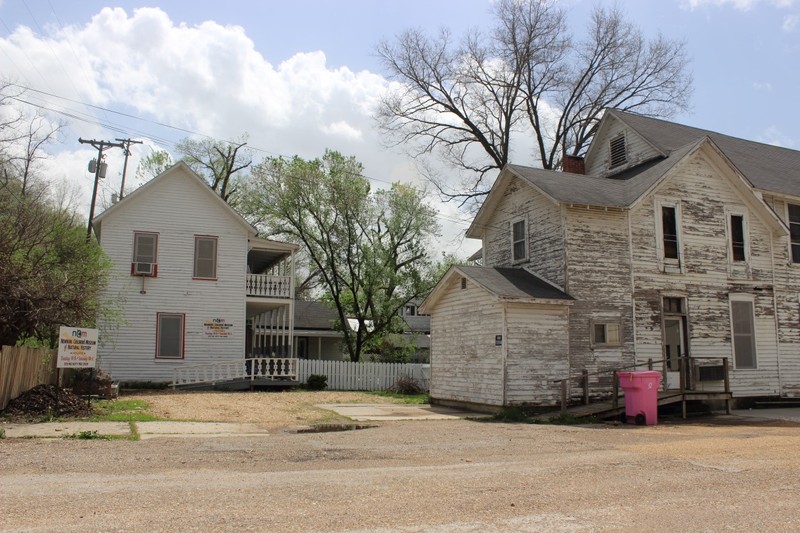
Photo is of the western façade of the Railroad Hotel and Eating House with a side view of the front façade. The photo illustrates the situation of the building at the corners of Water and Frist Street. Camera is facing northeast.
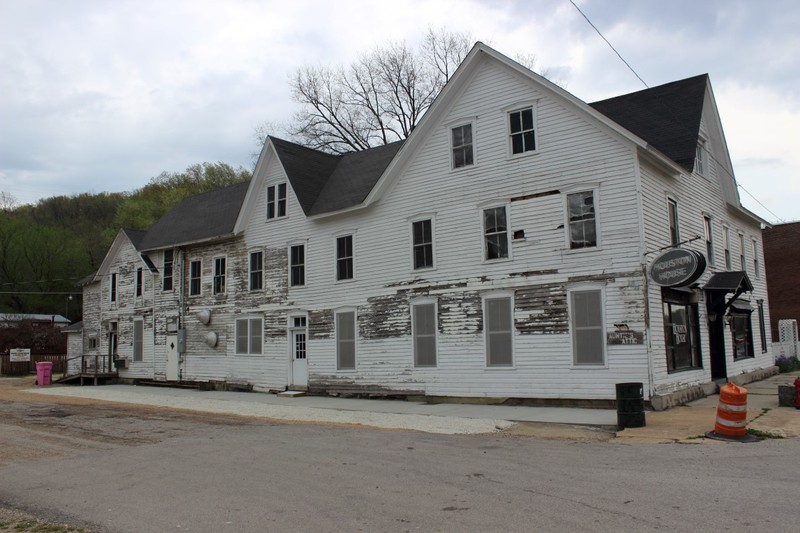
Photo is of the Cave Rock Fireplace located on the first floor of the Railroad Hotel and Eating House. The fireplace is located within the formal dining area that overlooks the Cave Rock Fountain directly outside. The fireplace is situated by wall that splits the dining area from the kitchen area. Camera is facing north.
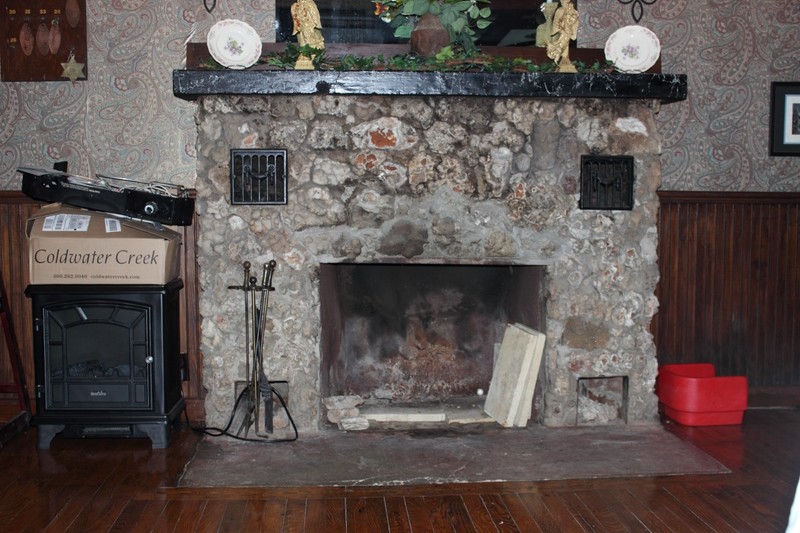
Houston House, 1900
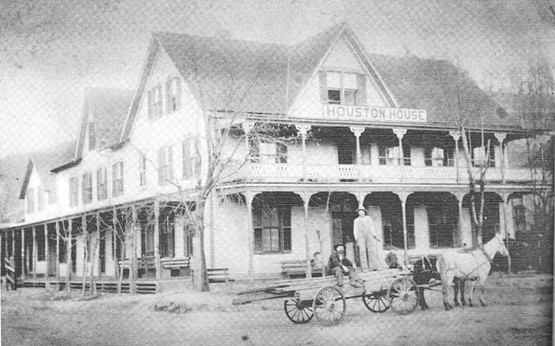
Scanned copy of an advertisement of the Railroad Hotel and Eating House (Houston House).
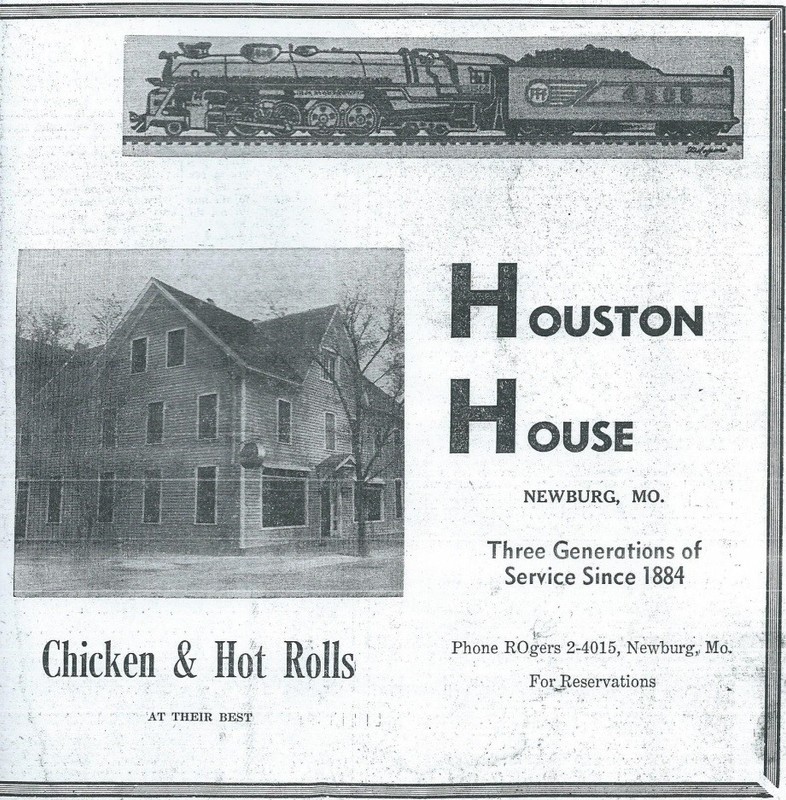
Scanned copy of an advertisement of the Railroad Hotel and Eating House (Houston House).
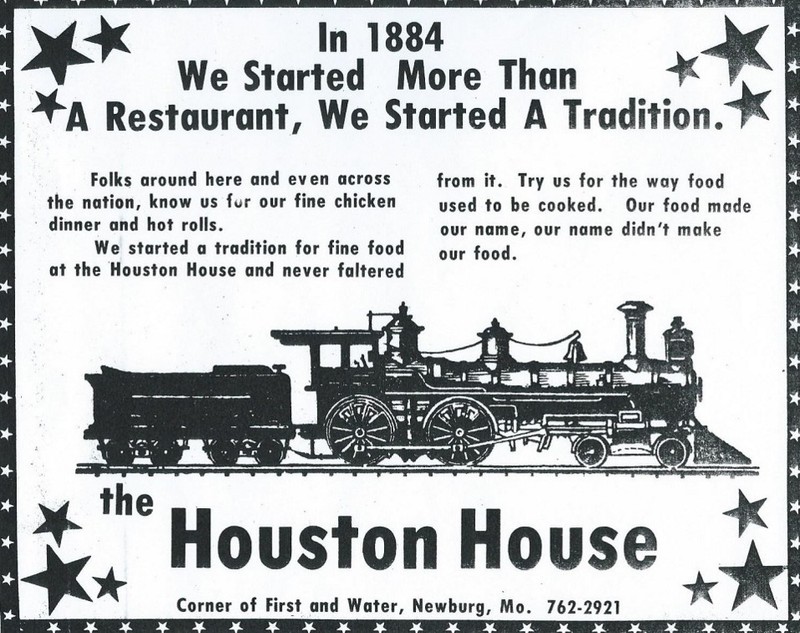
Backstory and Context
Text-to-speech Audio
Setting and Placement within the Town
The Railroad Hotel and Eating House (i.e. Houston House) is located at the corner of First and Water Streets. The Annex is located directly behind the hotel and a courtyard and walkway separate the two buildings from one another. The courtyard is comprised of several older looking trees and other flora. Located on the eastern side of the hotel near the center of the courtyard is a fountain composed of cave rock that was quarried from a local cave. This fountain was historically utilized by the hotel as a natural spring well but, has since dried up. The eastern façade of the hotel has a protruding white picket fence that stretches the length of the property down Frist Street. The fence then turns north toward the front of the Annex, parallel to Water Street on the western side of the property. This white picket fence helps to establish the boundaries of the property. These two buildings are located on the same block as the Lyric Theatre (i.e. Newburg Community Theatre), the old Drug Store, and the Sullivan Hotel. Behind the property lot is an old FRISCO caboose that sits on a small bed of tracks directly in front of the Railroad Museum. The hotel on its southern facing façade (front side) overlooks the railroad tracks that run through the community; these tracks are approximately fifty yards away from the building.
Railroad Hotel and Eating House Architectural Summary -Current and Historical
The Railroad Hotel and Eating House is a three story, frame building with a steeply, pitched roof, and intersecting gables. Overall, the building exhibits a modified rectangular floor plan. The hotel sits upon a concrete foundation with solid oak logs that were laid across the foundation and raises the building roughly two feet above the ground. The hotel has a simple, restrained exterior covered in weatherboard siding. The roof of the building is finished in asphalt shingles while the building's five chimneys are composed of brick. The overall design has little ornamentation but, exhibits a rustic elegance that is uncommon in the Maramec Region. The hotel interior features a cave rock fireplace which is in the dining area of the first floor and overlooks the courtyard with the cave rock fountain. Material for the fireplace was locally quarried from a nearby cave.
A single tiered porch once extended the length of the west facing façade and a two-tiered porch stretched from the bottom of the third floor to the ground level on the front façade was removed around 1908 as it interfered with the city's ability to improve the sidewalks along Frist Street.[1] The second-floor exterior door once opened onto the front facade's two-tiered porch but, was replaced with a window after the porch was removed. An addition to the north façade of the building was constructed sometime in the early 1900s and served as the Harris family living quarters when the Annex was converted to additional hotel rooms. The commercial windows along the front façade are replacements from the 1930s. The roof of the hotel was repaired and portions of it replaced in the late summer of 1973 after a fire ravaged the third floor. Today, one can look up at the exposed rafters and see where the replacement materials were "sistered" to the charred rafter remnants. The shutters on the first, second, and third floor windows have all been removed, exact date of which is not known. Most of the first floor two-over-two sash windows were replaced in the early 2000s owning to an attempt at restoration. The first-floor dining room floors were repaired, and the first-floor main hallway floors were replaced in late 2013 due to serve flood damaged.[2]
The Annex Architectural Summary - Current and Historical
The Annex is a two story, frame building with a steeply pitched roof, with a front facing gable. Overall, the Annex is of an "L" shape with a concrete foundation laid over by solid oak logs that raises the building roughly two feet above the ground with a two-tiered gallery porch that extends along the width of the front façade. A small single tiered porch reaches around the side of the front façade to a small addition to the building. The building has a simple, restrained exterior covered in weatherboard siding. The roof of the building is finished in asphalt shingles while the buildings two chimneys are composed of brick. The overall design has simple ornamentation composed primarily of decorative detailing in the gable ends as well as decorative detailing in the columns and railings of the porch which are indicative of the Princess Ann style of architecture.
Historical Context
The St. Louis-San Francisco Railroad (better known as the FRISCO) is largely responsible for the development of Newburg (1888) during the latter half of the 19th century. Unlike similar towns in the vicinity, such as Rosati, formerly known as Knobview (1845), St. James (1859), Dillon (1850s), Rolla (1858), Arlington (1867), and Jerome (1860), who each held a significant population, industry, and businesses prior to the construction of any major rail lines in the area.[3] Newburg boosts a unique claim as being the only town built solely by and for the purposes of the FRISCO in Phelps County. The town became the major stopping point on the rail line between St. Louis and Springfield, Missouri, and witnessed its "golden years" after the completed construction of the United States Military Base located at Fort Leonard Wood, Missouri, in 1940. For approximately the next ten years the town was inundated with supply trains for the war effort (World War II), as well as passenger trains converted into military use for the transportation of soldiers to the military training base at Ft. Wood. By 1952 the FRISCO took advantage of new advents in technology and new innovations in streamlined train designs and made the switch from an all-powered steam/coal engine fleet to an all-powered diesel engine fleet.[4] No longer needing to make frequent stops for refueling, coupled with less maintenance, and service duties, Newburg was no longer needed or utilized as a major stopping point. Passenger trains still frequented the area in sporadic spurts and the last passenger train to travel through the area occurred in March 1967.[5] For nearly eighty-three years Newburg had been a proud railroad town and a central commercial hub for the FRISCO, with various local industries and commercial/industrial endeavors springing forth due to the proximity of the railroad (such as the Ozark Iron Works and the Knotwell Iron Company).
The Rolla Weekly Herald (Rolla, Missouri) began reporting in the fall of 1882, that the FRISCO intended to relocate its division point from Dixon, Pulaski County, Missouri, to a location in Phelps County.[6] This announcement was enthusiastically received by some of the residents of Rolla who sought to entice the FRISCO to relocate its division point within their city. The economic benefits would create steady employment opportunities, growth of current commercial endeavors and the generation of new ones, as well as an increase in the tax base. However, due to prior railroad ventures in the area that routinely ended in bankruptcy, most of the Rolla citizenry were skeptical that this new railroad venture would be permanent or generate enough economic wealth to make the relocation profitable for both the city and the FRISCO. In the end, the site chosen laid approximately 10 miles east of Rolla in what was then referred to as the Little Piney Valley. The site was platted in 1883 by Captain C. W. Rogers, an employee of the FRISCO tasked with scouting a suitable site for the relocation of the division point which, would come to be known as a “new” burg.[7]
The official platting of the site attracted the attention of hotel proprietor William Henry Harris (1833-1906) who had built and operated three different hotels in Dixon, Missouri, beginning in 1869 and ending with the aptly named Harris House in 1878.[8] Five years later, construction would begin on a new hotel and a home for the Harris family (later referred to as the Annex) at Newburg, Missouri, roughly fifty yards from where the rail lines were being lain. The Railroad Hotel and Eating House officially opened its doors on January 1, 1884, the same day that the FRISCO roundhouse was completed.
Harris along with his wife, Mary Ann Backues (1839-1905) and their children – Martha Elizabeth (1860-1920), David James (1861-1933), Susan Matilda (1863-1935), William T. (1865-1884), Joseph Jackson (1865-1916), Benjamin Franklin (1869-1909), and Anna Gertrude (1874-1967) – packed their belongs and moved into their newly constructed home in Newburg in the winter of 1883-1884. According to United States Federal Census records[9] Harris, a native Virginian, worked as a farmer between 1850 and 1870 in both Osage and Pulaski Counties in Missouri. Between the 1870 and 1880 censuses, Harris had given up farming and become a landlord. Seemingly to have prospered as a landlord and in the hotel business, Harris was able to obtain land on which to build his family a grand two-story home and an elegant three-story hotel complete with dinning services in the fledging town of Newburg. By all accounts 1884 was a boom year for the Harris family[10] as they catered to the burgeoning community, the steady traffic of railroad workers, and the influx of travels; however, tragedy struck the family on July 15, 1884. The Rolla Herald headline on July 17, 1884, read “Two Trains Meet on Dixon Hill, Killing Wm. Harris, and Destroying a Vast Amount of Property.”[11] The paper reported that at around 8:00pm a west bound train consisting of roughly forty cars and pulled by two engines meet the east bound train along the down grade of Dixon Hill, pinning nineteen-year-old William T. Harris between the two trains, killing him instantly. Young Harris served as a fireman on the hill engine and was unable to escape the collision.[12] The Rolla Herald reported that “[t]his is the fourth death occurring on Dixon hill [sic] so far this year.”[13] Grieving the loss of their son, the elder Harris and his wife are reported to have returned to Dixon, Missouri, leaving the hotel operations to their daughter and son-in-law, Martha Elizabeth Harris and Jerome (Jerry) Adolph Houston (1845-1918).[14] The 1900 United States Federal Census places both William, Mary, and their youngest daughter, Anna Gertrude, in Arlington, Missouri, roughly nine miles west of Newburg. The couple are reported to have passed away in Newburg on February 4, 1905, (Mary) and June 12, 1906, (William).
Martha and Jerome Houston operated the hotel between the late summer of 1884 until their deaths. During this time the Railroad Hotel and Eating House took on the name of the Houston family (locals and later the surrounding community would come to call it the Houston House). Jerome, a native Ohioan, worked as a supervisor for the FRISCO while Martha and her Aunt Mayme F. Harris (1873-1952) oversaw the operations of the hotel. Crippled from a tragic accident at a young age[15], she was unable to navigate the stairs up to her apartment, staff would assist her into a small elevator, located between the kitchen and the back edition, and manually crank the wheel lifting her up to the second floor. Staff would do this twice a day, once in the morning and once at night.[16] Today, the elevator is no longer operational but, it can still be seen on the second floor.
Martha and Jerome had six children – Mary Ann (1879-1962), George Adelbert (1881-1943), Frank Adolph (1883-1884), Earle Harris (1890-1961), and twins Homer James (1893-1947) and Helen Kithen (1893-1983). It is the latter two children that would take on the responsibilities of the hotel after the death of their parents (Jerome on December 28, 1918, and Martha on January 11, 1920). Homer attended the Missouri School of Mines and Metallurgy. During his freshman year, he played ’17 Tackle for the Miners football team. Nicknamed “Hobbs” by the team, he “[w]as a hard man to run plays through or around…[h]e played the Thanksgiving game with a badly wrenched knee…, but [he] stuck to it and tore through the Oklahomans time and again.”[17] The 1913-1914 football season went 9-0, the best season that the Miners had ever had. Homer was an active member of the Newburg City Council, the Lions Club, Newburg Equality Lodge No. 497, Rolla Chapter No. 32, Rolla Commandery No. 59, the Mystic Shrine of Springfield, Missouri, and the Sojourners.[18] He passed away on August 23, 1947, after a short illness, leaving his twin sister, Helen, to manage the hotel. Helen earned her bachelor’s degree in education from the University of Missouri-Columbia in 1933. Returning to Newburg, she taught elementary school children for five years and served as the Elementary Principle for sixteen years.[19] By 1937, she had begun to spend the bulk of her time working at the hotel with her brother. She passed away on January 19, 1983.
The roaring 20s proved to be a time of growth for the hotel. An ever-increasing influx of trains, railroad workers, and passengers, kept both the hotel and dinning portions busy. The Great Depression of the 1930s did not seem to dampen business; the Rolla Herald reported on September 26, 1935, that the Houston House “is attracting an increasing number of guests.”[20] Helen attributed this increase to a visit from a Mr. and Mrs. Charles McCrae of Kansas City, Missouri, who dined at the hotel in 1934. With the ever-increasing number of hotel guests and dinners it became apparent that the dinning area needed to be renovated. Renovation took place amongst the influx of guests and was completed in the fall of 1935.[21] By the early 1940s, the Houston House was kept busy by the construction of Fort Leonard Wood near Waynesville, Missouri, roughly 21 miles west of Newburg. Trains carrying construction supplies, equipment, and workers generated a steady flow of business for both the Houston House and the community. Once construction was completed and the United States had entered World War II some 300,000 soldiers would pass through the Infantry Training Center at the Fort. Nearly all these soldiers would have passed through and/or stopped over in Newburg on their way to the training center.
Between the end of World War II and the early 1950s, the FRISCO completely dieselized its locomotive fleet.[22] With the switch from steam to diesel engines, the FRISCO decreased its labor force along its routes. No longer needing to make regular stops to refuel, Newburg’s importance as a key lay-over location disappeared virtually overnight. Coupled with the construction of Interstate 44 during the 1950s and the ever-increasing affordability and availability of automobiles, passenger train service steadily decline. Undeterred, Helen closed the hotel portion in the mid-1950s but, continued to operate dinning services until 1973. No longer catering to the FRISCO cliental the Houston House turned its attention to the local and surrounding communities for business. Despite closure of dinning services in 1973 Helen would on occasion, reopen the business for short stents up until her death in 1983.
Since its construction, the Houston House has seen its fair share of natural disasters. The first of which occurred in late September 1904, when a fire broke out in the attic of the FRISCO Depot.[23] The fire quickly spread to the adjoining Harvey Eating House then, crossed Frist Street consuming the Cottle Hotel. The fire spread up the street igniting the residence of Mrs. Sullivan, Daugherty’s Pool Room, and the Sullivan Hotel before fire crews from Rolla and volunteers from the Missouri School of Mines and Metallurgy were able to holt the blaze. The Houston House narrowly avoided disaster as the fire was halted just two buildings down the street. A fire, which began in the kitchen of the Houston House broke out in December 1973 igniting fears that the building would close its doors for good.[24] Portions of the kitchen, third floor, and roof were badly damaged by the time the fire was put-out. Repairs were quickly undertaken, and dinning services resumed with much fanfare from the community. Another fire thirteen years later caused extensive damage to the kitchen, portions of the dinning area, and rear editions. Then owner, J. D. Turley, who had been attempting restoration of the building, received estimates of some $25,000.00.[25] According to the Rolla Daily News, the Rolla Fire Chief stated that the fire was due to an electrical shortage in the kitchen.[26] Between April and June of 1945 three flash flood events, all reported by the Rolla Herald as “unprecedented,” wreaked havoc on the town. Combined estimates for the flood damage during these three events were placed in the millions of dollars. At least five deaths occurred, roughly two dozen homes were swept off their foundations, automobiles were washed downstream, train engines and their cars were swept off tracks, and homes and businesses along First and Water Streets were flooded with up to two feet of water.[27] The Houston House was reported to have had up to two feet of standing water on its first floor. Flash flooding occurred again in the summer of 1951. The Rolla Herald reported that “[g]arages were moved from their foundations, basements and homes were flooded, business houses had six inches to three feet of water in them, and rocks, gravel and debris of all kinds was deposited throughout the town.”[28] Additional major flooding occurred in 1993 and 2013. On August 23, 2013, the Rolla Daily News reported that the first-floor floors of the Houston House were buckling, and that Black mold had begun to sprout.[29] The damage to the building was estimated at $80,000.00.[30]
Today, the Houston House remains an integral link to the towns railroad heritage. Currently, owned and operated by the Newburg Community Revitalization Program Group which, runs a Soup Kitchen once a week for the local community to raise funds to help with building/property maintenance and upkeep. The Annex, still associated with and a vital part of the property now houses the Newburg Children's Museum founded and curated by Dr. Elizabeth Frances Rose te Groen.
Sources
[1] “From Newburg Independent.” Rolla Herald. (August 1908).
[2] O’Neill, Eddie. “Soup is back at the Houston house.” Journal Star (December 2013), https://www.pjstar.com/story/sports/outdoors/fishing/2013/12/21/soup-is-back-at-houston/41483906007/ (accessed July 2022).
[3] Cohen, Gerald Leonard, Portrait of Phelps County, Missouri (The Rolla Daily News, 1992), 28.
[4] Bradbury, John F. Jr., “Special Issue: The ‘Frisco’ in Phelps County.” Newsletters of the Phelps County Historical Society (December 1991), 3.
[5] Cohen, 7.
[6] Bradbury, John F. “The Founding of Newburg, 1882-1885.” Old Settlers Gazette (July 1991), http://www.oldstagecoachstop.org/webgeezer/Gazette91/foundingnewburg.pdf (access July 2022).
[7] Cohen, 27.
[8] History of Laclede, Camden, Dallas, Webster, Wright, Texas, Pulaski, Phelps and Dent Counties, Missouri. Index Edition, 1974 (Chicago: The Goodspeed Publishing Co., 1889), 143-144.
[9] U.S. Census Bureau. “ancestryLibrary.com,” United States Federal Census, 1860, 1870, and 1880.
[10] The May 1, 1884, edition of the Rolla Herald reported that “The Newburg Hotel, kept by W. H. Harris, is doing a rushing business, and is a well kept house.” Note that the hotel was often referred to in its early years as the Harris House, Harris Hotel, Newburg Hotel, and the Railroad Hotel and Eating House. It did not colloquially become known as the Houston House until sometime in the early 1900s.
[11] “A Fatal Mistake: Two Trains Meet on Dixon Hill, Killing Wm. Harris, and Destroying a Vast Amount of Property.” Rolla Herald (July 17, 1884).
[12] Ibid.
[13] Ibid.
[14] Wilkinson, Ann. “Houston House Was First Newburg Building.” Rolla Daily News (July 4, 1976).
[15] “Miss Mayme Harris, 79, Of Houston House Buried in Newburg.” Rolla Herald (September 4, 1952).
[16] Wilkinson, Ann. “Houston House Was First Newburg Building.” Rolla Daily News (July 4, 1976).
[17] The Rollamo Yearbook of the Missouri School of Mines and Metallurgy, Vol. 8. (Rolla, Missouri, 1914), 70, 125.
[18] “Owner of Newburg’s Houston House Dies.” Rolla Herald (August 28, 1947).
[19] Phelps County Missouri Heritage. Complied by the Phelps County Genealogical Society. (Morley, MO: Acclaim Press, 2013), 118.
[20] “Houston House Dining Room Redecorated.” Rolla Herald (September 26, 1935).
[21] Ibid.
[22] Phelps County Missouri Heritage, Vol. 1. Complied by the Phelps County Genealogical Society. (Rolla, MO., 1992), 11.
[23] “Newburg Badly Damaged: Fire at Division Point is Checked by Rolla Fire Department.” Rolla Herald (September 29, 1904); “Newburg Nearly Wiped Out By Fire: Fire at Frisco Division Point is Checked by Rolla Company.” Mexico Missouri Message (October 6, 1904).
[24] May Alice Beemer. Newburg’s First Hundred Years, 1884-1984. (Newburg, MO., 1984), 34.
[25] R. D. Hohenfeldt. “Fire Closes Historic Houston House.” Rolla Daily News (December 8, 1986).
[26] Ibid.
[27] “Property Damage Great.” Rolla Herald (June 14, 1945); “5 Dead, Newburg in Ruins After Flash Flood.” The Bland Courier (June 14, 1945); “Newburg Struck By Cloud Burst: 5 People Drowned Over $500,000 Property Damage.” Rolla Herald (June 14, 1945); and “Fort Wood News.” Rolla Herald (June 21, 1945);
[28] Flash Flood Does Estimated $100,000 Damage to Newburg: Water Reported Only 16 to 18 Inches Lower Than 1945 Flood Which Took Five Lives.” Rolla Herald (July 5, 1951).
[29] Hackbarth, Paul. “Flood dame keeps Houston House doors shut for now.” Rolla Daily News (August 23, 2013) http://www.therolladailynews.com/article/20130824/NEWS/130829360 (access February 11, 2014).
[30] Ibid.
Photograph taken on April 28, 2014, by Rachel Forester
Photograph taken on April 28, 2014, by Rachel Forester
Photograph taken on April 28, 2014, by Rachel Forester
Photograph taken on April 28, 2014, by Rachel Forester
Photograph taken on April 28, 2014, by Rachel Forester
Photograph taken on April 28, 2014, by Rachel Forester
Photograph taken on April 28, 2014, by Rachel Forester
Photograph taken on April 28, 2014, by Rachel Forester
Photograph taken on April 28, 2014, by Rachel Forester
Photograph taken on April 28, 2014, by Rachel Forester
Photograph taken on April 28, 2014, by Rachel Forester
Photograph taken on April 28, 2014, by Rachel Forester
Photograph taken on April 28, 2014, by Rachel Forester
Photograph taken on April 28, 2014, by Rachel Forester
Photograph taken on April 28, 2014, by Rachel Forester
Photograph taken on April 28, 2014, by Rachel Forester
Photograph taken on April 28, 2014, by Rachel Forester
Photograph taken on April 28, 2014, by Rachel Forester
Photograph taken on April 28, 2014, by Rachel Forester
Photograph taken on April 28, 2014, by Rachel Forester
Mary Alice Beemer Photograph Collection, 1885-1955 (R0496), folder 23, The State Historical Society of Missouri-Rolla Research Center
Rolla Daily News, April 22, 1955
Rolla Daily News, July 4, 1976
